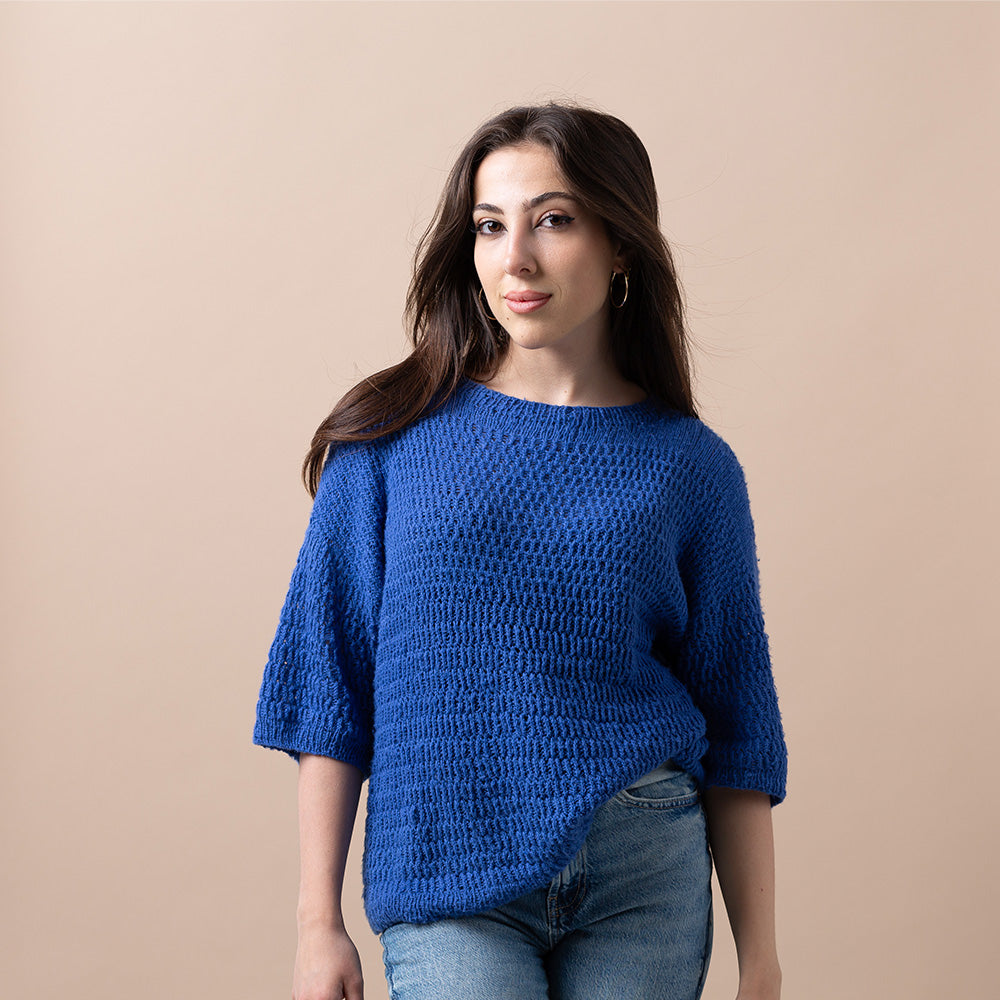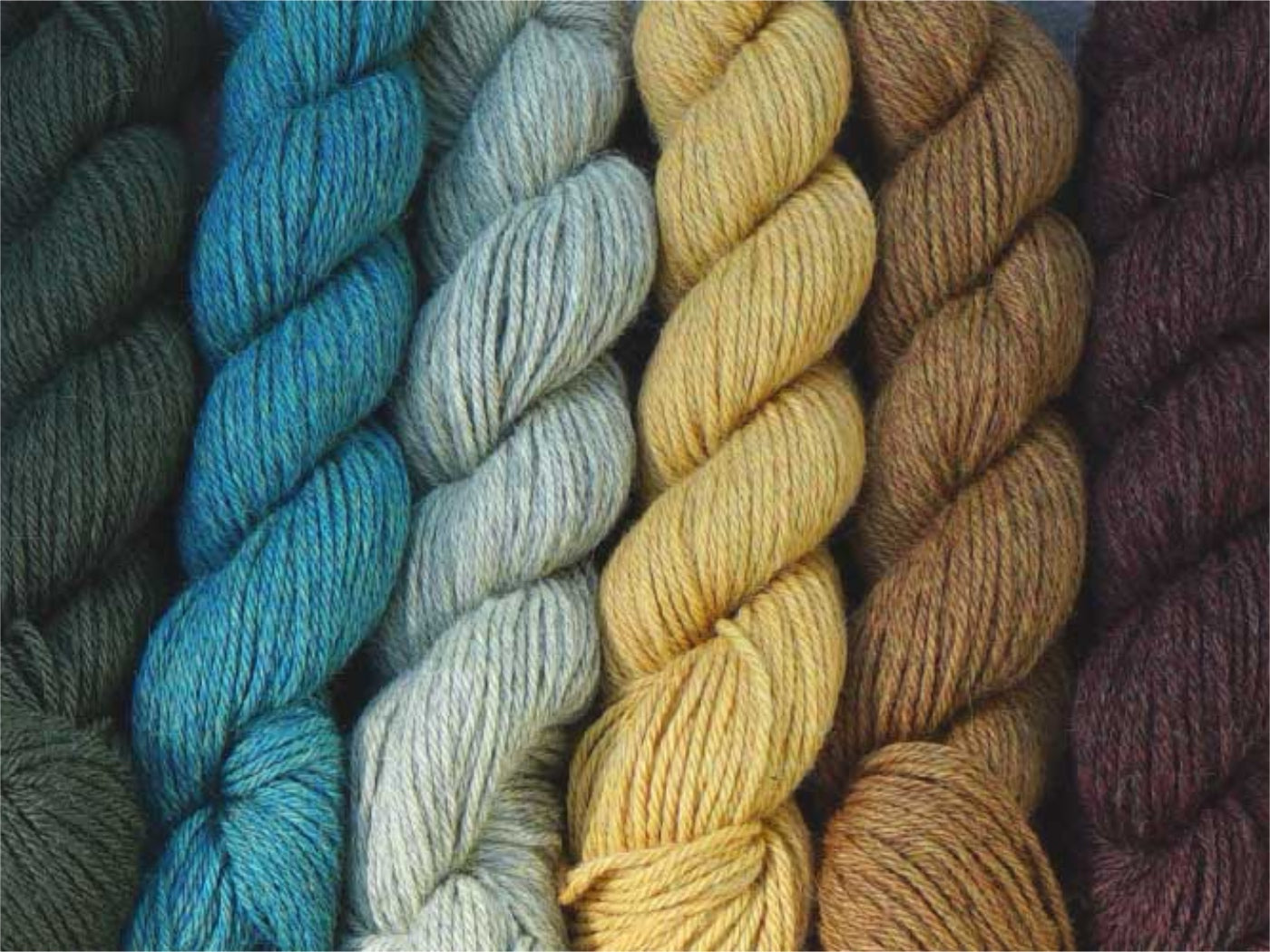We shared with you some interesting facts about camel wool in a previous blog post, and now we are back with more! Alpacas – What kind of animals are they? Where did they come from? What is so special about their wool? Keep reading to find out!
The Alpaca and Its Origins
Did you know that alpacas are actually camels? They are part of the same family, even though they don't have humps. Alpacas (Vicugna pacos) belong to the New World group of camelids, along with their wild cousins the Guanaco and the Vicuna. These animals were domesticated around 7,000 years ago in the South American Andes. Llamas were bred from Guanaco, while alpacas were bred from Vicuna and have been in existence for around 4,000 years. While llamas were kept as pack animals and a source of food, alpacas were valued as farm animals due to their soft coat.
Two breeds make up the species of alpaca – the Huacaya and the Suri. They both weigh between 60-80 kg (132-176 pounds) and have a life expectancy of about 20-25 years. The Huacaya makes up over 90 percent of the total alpaca population. It has a finely crimped undercoat and very fine, short guard hair, unlike the Suri whose hair is straighter and hangs down in long silky, shiny, slightly curly strands. Although there are an estimated 3.5 million alpacas worldwide, their numbers are declining, particularly in Peru. This is partly due to harsh living conditions and state literacy programs that are resettling the poor rural population to the cities. (Source: Alpaca Breeding Association Germany AZVD)
At the peak of the Incan empire, selective breeding produced alpacas whose fleeces were far superior to those of today's animals. The hairs were under 15 microns thick (1 micron is 1000th of a millimetre!), as fine as the hair of the vicunas, which is a rarity today. We are really proud to be one of only a handful of suppliers of Vicuña wool in Europe! When the Spanish conquered South America in the 16th Century, the Inca Empire was lost, and with it the alpaca breeding which had produced these amazingly fine haired animals. Since then, llamas and alpacas have interbred, resulting in the loss of this finer fleece.

In Search of the Finest Alpaca Hair
Some of the fibres that go into our alpaca yarns come from the Pacomarca Farm based in the Peruvian High Andes, 4,600 metres above sea level. The aim of the research carried out at Pacomarca is to restore the quality of alpaca fibres from the Inca era through targeted breeding and genetic programs. It is not only the quality of the fleece that is important, but also the welfare of the animals and the wellbeing of the shepherds who look after them and their families. All of Pacomarca's shepherds are supplied with modern shearing equipment to enable quick and stressfree shearing of the alpacas, rather than the mechanical shears that are normally used.
At Pascuali, we strive to offer you the highest quality yarns available, that are produced in a sustainable way. Animal welfare, environmental issues and the welfare of the alpaca farmers and shepherds is just as important to us as the fibre itself. We regularly visit our suppliers to see for ourselves the living standards and working conditions of both the animals and the farmers and shepherds. Fairness and sustainability are very important to us at every step of production, to ensure we offer you the best possible yarns we can. This is paramount to us.

"A Warm Gift from God"
The Spanish writer and missionary, Bernabe Cobo summed it up perfectly in 1653 in his book "History of the New World" when he said
"Alpaca, un càlido don de Dios a los Hombres"
(Alpaca, a warm gift from God to mankind).
Alpaca fibre has excellent thermal properties and it insulates better than any other wool against cold temperatures. The fibre is hollow enabling it to store body heat when the weather is cold, and allowing your skin to breathe when the weather is warm, making alpaca garments perfect for all year round use. The fibres can absorb approximately 25 percent of their own weight in moisture without feeling damp and then have the ability to wick the moisture away, making it comfortable to wear. It is also very hard wearing, being about three times more tear resistant than sheep's wool. Also, it felts far less than other animal fibres, such as cashmere, making alpaca garments very durable. The protein molecules that make up the fibre are capable of neutralizing odours, and because alpaca contains hardly any lanolin (wool fat), it is naturally hypoallergenic. Even those with the most sensitive skin can happily snuggle up in a cosy alpaca sweater and not worry about it. Due to the lack of lanolin, alpaca fibres possess antibacterial properties, as bacteria cannot multiply on the surface of the wool. In addition to this, alpaca fleece is much easier to clean and prepare for spinning than sheep fleece, as there is no lanolin to wash away first, thereby saving water and the use of detergents.

Still not convinced? Well, read on... Alpaca wool is antistatic, protecting you against static charge, especially in the winter when the air indoors is so dry due to central heating. Although this may not influence your choice of knitting yarn, it is reassuring to know that it is flame retardant due to its biochemical composition.
Alpaca - Fine, Finer, Finest
Ultimately, the main reason for choosing alpaca yarn is probably its softness. The diameter of the fibre is very small which makes it extremely light. This means that light yet warm textiles can be created from alpaca fleece. Like cashmere, the scales on alpaca fibres are very close together, which is why it feels so soft and smooth against the skin, and has such a beautiful lustre. The structure of alpaca fibre is similar to that of human hair, although it is 10 times finer!
Clothing has been made from alpaca fibre for centuries. The clothing worn by the Incas was made from moderately soft Huacaya fibres, while the finest fibres of the Haucaya were used exclusively for the Emperor. Today all alpaca fibres are freely available for everyone to enjoy, and like cashmere, mohair, angora, vicuña and qiviut, it is one of the finest fibres in the world.
All Pascuali alpaca yarns come from Peru and are processed and spun there to the highest quality in a sustainable way. Our alpaca ranges from royal alpaca to baby alpaca. Royal alpaca fibres are very fine at less than 19 microns. Baby alpaca doesn't mean that it comes from baby alpacas! It means that the fibres are between 19-22 microns. Superfine fibres are between 22-24.9 microns and fine fibres are between 25-27.9 microns, and alpaca which are between 28-30 microns. However, fine and alpaca are only provisionally applicable for clothing.

Alpaca yarn with a thickness of 26 microns feels much softer than sheep yarn at 26 microns because the scales on the individual hairs lay flatter on alpaca hairs than those found on sheep hairs. The points at which the scales overlap are no higher than 0.4 microns on alpaca hairs compared with 0.8 microns on sheep hairs. This difference can be felt on the skin even when the fibres have the same thickness. This is what makes sheep wool seem rough and scratchy against the skin. Even a thicker, stronger alpaca fibre feels softer and silkier than fine merino wool. Alpaca fibre comes in 22 natural colours and over 60 shades from white to grey, brown and black, and of course there are dyed fibres.
Now that we have told you a bit about our alpaca yarns take a look around, get inspired and have your needles ready! The alpaca yarns in our online shop include several that are pure alpaca, ranging from lace to bulky weight, as well as alpaca blends.




